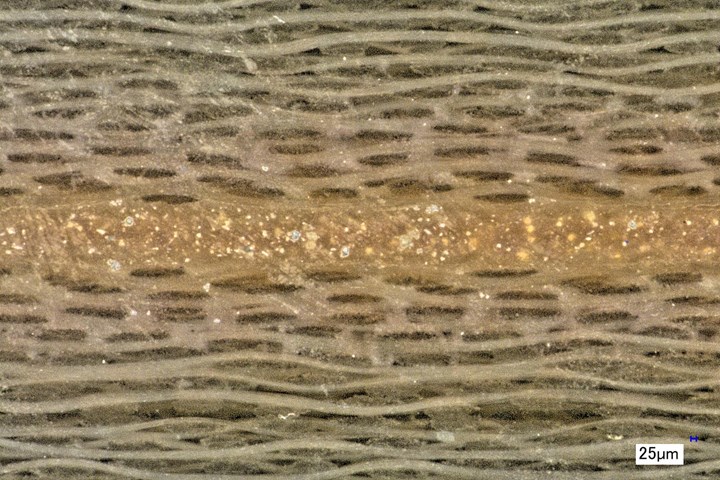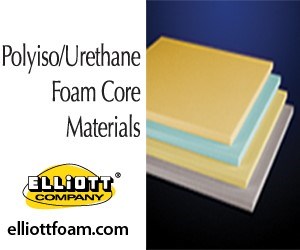Solvay expands range of FusePly covalent bonding for composite structures
FusePly 250 technology, designed for 250°F to 350°F composite bonding, offers optimized bond reliability and high part performance.
Microscopic view of FusePly resin (at the interface with prepreg and adhesive) ingressing into the composite panel during co-cure (as indicated by discolored composite layers) and delivering a chemically bonded interface between FusePly and adhesive. Photo Credit: Solvay
Solvay (Alpharetta, Ga., U.S.) has expanded its range of FusePly chemical bonding technology with a second product, FusePly 250, designed to bond composite structures at 250°F and higher. The new product complements the previous FusePly 100 grade, introduced in 2018 which has now been renamed FusePly 350 to reflect its compatibility with 350°F cure film adhesives. Both grades offer step-change bonding performance and durability and can easily be integrated into existing manufacturing processes as an upgrade for traditional surface preparation methods.
Solvay reports that FusePly is a breakthrough composite bonding technology resulting in covalent bonds between adhesives and composite structures. While it handles and processes like a conventional peel ply product, it creates a reliable chemically functionalized composite surface which eliminates time- and labor-intensive surface preparation steps and assembly processes.
“The reliability and robustness of bonded structures are a top priority for users of composites in safety-critical applications in aerospace and other demanding markets” says Stephen Heinz, VP research and innovation for Solvay’s global Composite Materials business unit. “We developed FusePly, a fundamentally new bonding approach, to meet the needs of leading aircraft OEMs and enable them to take full advantage of composites for lighter, stronger structures.”
Related Content
-
Industrializing additive manufacturing in the defense/aerospace sector
GA-ASI demonstrates a path forward for the use of additive technologies for composite tooling, flight-qualified parts.
-
Plant tour: Airbus, Illescas, Spain
Airbus’ Illescas facility, featuring highly automated composites processes for the A350 lower wing cover and one-piece Section 19 fuselage barrels, works toward production ramp-ups and next-generation aircraft.
-
Bladder-assisted compression molding derivative produces complex, autoclave-quality automotive parts
HP Composites’ AirPower technology enables high-rate CFRP roof production with 50% energy savings for the Maserati MC20.














